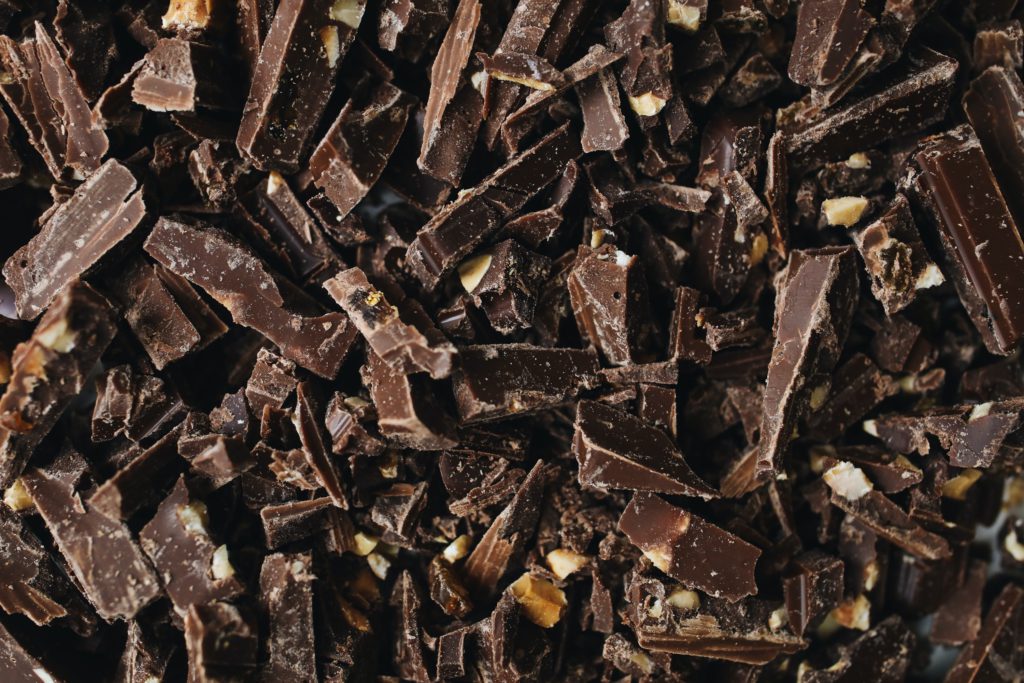Nia Belcher is the owner of Ola Pacifica, a New Zealand-based company that exports Samoan cacao to Switzerland for processing into specialty chocolate. Nia Belcher believes that the reason why Samoan cacao has become such a desirable flavour comes down to the individual farmers, as well as the island itself. Along with rich organic soils and seasoned basalts from olivine, the region provides the perfect growing conditions for robust flavours from the Samoan-sourced cacao beans, says Devonport chocolate owner Stephanie Everitt. Devonport Chocolates is eager to source ingredients for the chocolate from Samoa to create an all-Samoan bar of dark chocolate, she added.
A new 80 per cent dark chocolate bar using Samoan-sourced cacao beans, Samoa Cacao Beans, from Samoa, was launched recently by Devonport Chocolates in Fine Foods New Zealand, in Auckland. The cacao beans are from a rare and unique supply of cacao, giving the new chocolate high cacao mass solids, making it perfect for both sweet and savoury dishes.
The Criollo Group is one of the two varieties of cacao that provides a refined chocolate flavour that is sought after by chocolate manufacturers. Cacao Butters and Solids, including Cacao Powders and Liquors, are major products extracted from fermented, dried seeds, providing major raw materials to chocolate, confectionery, cosmetics, and pharmaceutical industries. Food technology researcher Darin Souka studies the aromas and flavour nuance of cacao plants, whose pulp-covered seeds, when processed, are transformed into cocoa nibs and chocolate-covered seeds.
Through years of research, food technologist Darin Sukha has discovered that the fruity flavours of cacao and chocolate are closely tied to the way beans are fermented, whereas the floral flavours are more strongly linked to the genetics of the crop. Food technologist Darin Sukha was the lead author of The Effects of Processing Location and the Growing Environment on Chocolate Flavors, the first study systematically exploring how terroir influences flavour in chocolate. He wanted to understand–and communicate to chocolate consumers–not just the biological characteristics of cacao plants, but the sensory ones, too.

Dorothy Washburn, too, says Contain does not discount the possibility that residents at Site 13 are eating cacao mostly as ritual food. If nothing else, her husband, William Washburn, says, contain suggests that these folks had developed a taste for chocolate, and knew how to make chocolate–making them no different than chocolate lovers today 1,200 years later.
It is thought that, through the years, cacao came to be written cacao, and the rest, they say, is chocolate history. Humanity’s habit of using cacao dates from at least 1,900 BC and 1,500 BC, with Mokaya of Mexico already enjoying the chocolaty beverage.
In Mesoamerica, cacao was mostly the food of elites, who would drink the frothy chocolaty beverage, often spiced, during banquets and other ceremonial occasions. They used cacao seeds, seeds of the cacao tree that produce chocolate, as currency, though the precious finished product was mainly reserved for society’s elite, like kings and queens.
During this period, the majority of Samoan chocolate was consumed locally or exported to Koko Samoa, the popular local hot chocolate beverage made with cocoa beans. While we cannot be sure exactly when cacao was introduced to the islands, Germany’s annexation of Samoa in 1900 brought the old, familiar colonial push for profits, and increased the trade in imported cacao, which grows exceptionally well in the region’s tropical weather. Officially, cacao arrived in Samoa in 1883, when Germans brought plants from Ceylon over for cultivation.
Today, cocoa is grown primarily on small-scale family farms, where farmers cultivate cocoa trees along with other tropical crops as part of subsistence agriculture. However, many families in Samoa do indeed farm cacao and process it for their consumption. The good news is, all over the world, cacao is changing lives for the better, with more major chocolate makers making the switch to Fairtrade chocolate. For those dreaming of chocolate, giving in to temptation is even sweeter now as the leading chocolate suppliers are adopting a sustainable concept, improving the lives of thousands of chocolate farmers worldwide.
Ditch the trashy candy bars that contain junk chocolate, and stock up on organic cacao for a host of incredible benefits. While cacao has many benefits, do not make the mistake of eating every single cacao or chocolate bar bag you can find at your supermarket. Even if it is not your day to cheat, you do not need a reason to consume cacao or a little bit of glorious dark chocolate.
It is early in the morning, and Samoan cacao farmer and chocolatier Floris Nieu is wearing gumboots, preparing to go about the daily business of farming in the village of Tuanai, Samoa. Cacao farmer, Floris Niu, ferments her beans traditionally, as taught to her by her mother. As the former cacao bean supplier for New Zealand boutique chocolate firm, She Universe, (where she also worked as contract Business Development & Marketing Manager), Floris knows every bean that she has exported or sold locally.
Floris has decided to focus on local markets and to train others to understand that cocoa farmers in Samoa have it all down in terms of creating valuable cacao products such as chocolate. Site 13 Cacao is the oldest cacao farm in North America, surpassing the chocolate of New Mexicos Chaco Canyon by about 300 years. The contents suggest that cacao beans, which only grow in the tropics, were imported into Utah by the late eighth century, from farms thousands of kilometres away.
During a high point in the history of cacao exports from Samoa, during the 1900s, Samoan producers were practising fermentation, but as the crop was no longer exported, it shifted to becoming a part of everyday life for the Samoans, and over time, those skills were lost as the demand was not as great.


